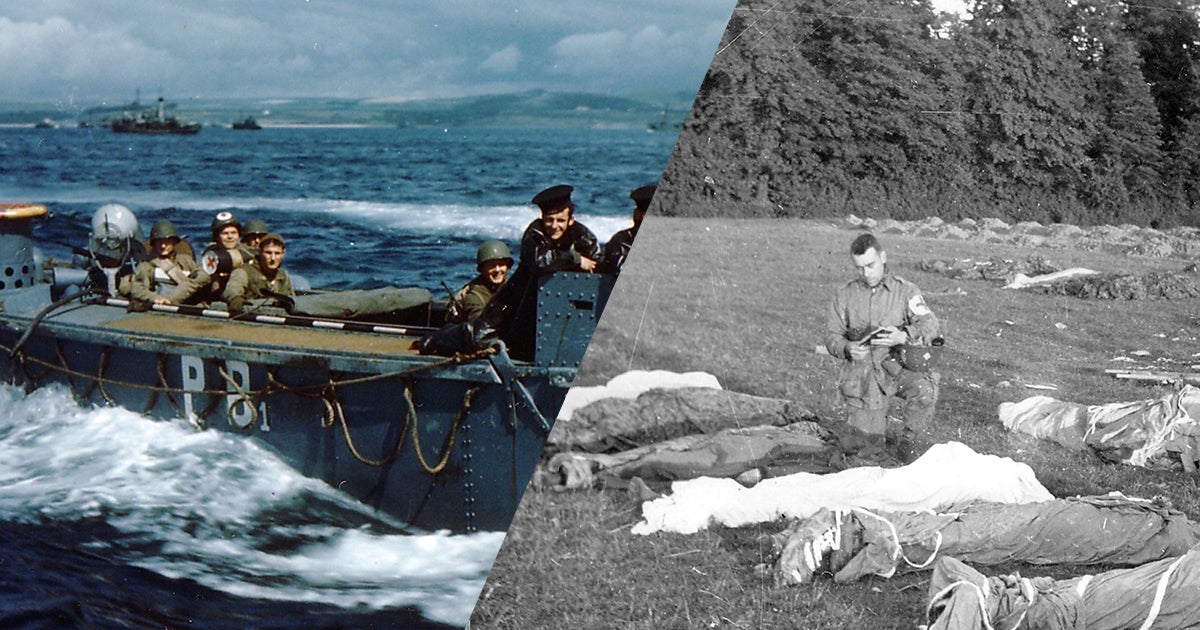
by Maaike Duininck & Jorge Gomez • 6 minutes
Today, we commemorate the 81st anniversary of the D-Day invasion. On this day in 1944, more than 150,000 American, British and Canadian forces landed on five beaches along a 50-mile stretch of the heavily fortified coast of France’s Normandy region.
This incredible military operation, which lasted from June 1944 to August 1944, was a pivotal turning point that resulted in the liberation of Western Europe from Nazi control.
Reenactments and films, such as Saving Private Ryan, help depict the heroic efforts that were witnessed on this day. We see images of young soldiers huddled shoulder-to-shoulder landing on the mine-riddled beach, while German machine guns rain fire on them. They also give us perspective of the risk these brave men took while putting themselves in harm’s way.
But alongside those soldiers is a group of men in uniform who rarely get the attention they deserve. Chaplains were right there alongside those who stormed the beaches of Normandy. Some of the finest examples of courage to God, man and country are those of Father Francis Sampson, Father Joseph Lacy and Father Ignatius Maternowski.
Each of them showed true heroism by being side-by-side with our troops and encouraging soldiers spiritually in the face of evil. One even sacrificed his own life trying to secure a place where he could tend to the wounded and dying.
Francis Sampson: The Parachute Padre
Father Francis Sampson, a chaplain from the 501st Parachute Regiment, dropped in with his unit on D-Day. The “Parachute Padre,” as fellow soldiers called him, didn’t waste any time. After landing, he immediately began tending to wounded warriors, administering last rites and providing spiritual support.
As he tended to those in need, German SS troops overtook Sampson’s position and captured him. As he was being stood up to be shot, a German officer who happened to be Catholic noticed his chaplain’s badge, the red cross on his arm and the crucifix around his neck. The officer stopped the execution. In a display of divine intervention, Sampson was interrogated and then released.
Sampson’s courage didn’t end on D-Day. He was captured by German troops once again and taken to a POW camp. During his captivity, Sampson continued to minister, tending to the sick and providing spiritual comfort and encouragement to other prisoners. After Russian forces liberated the camp, Sampson immediately returned to the frontlines to resume his chaplain duties.
“Probably no chaplain, Catholic or otherwise, saw more of the horrors of the hedgerow campaign than Francis Sampson,” wrote Jesuit Father Donald Crosby in his book Battlefield Chaplains: Catholic Priests in World War II.
For his exemplary service, Sampson awas awarded the Distinguished Service Cross, the Bronze Star and the Purple Heart. After the war, he would go on to become the U.S. Army’s Chief of Chaplains.
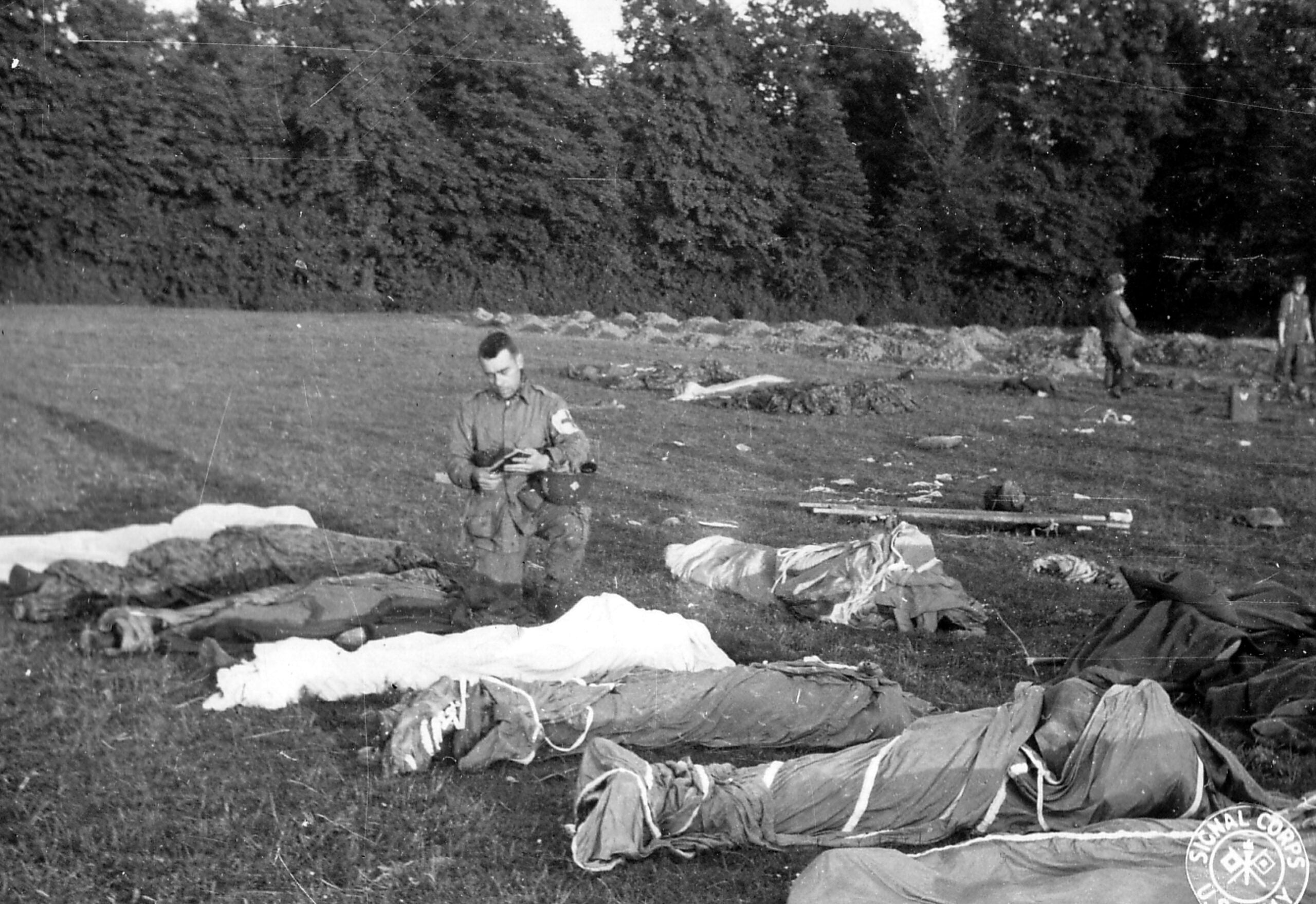
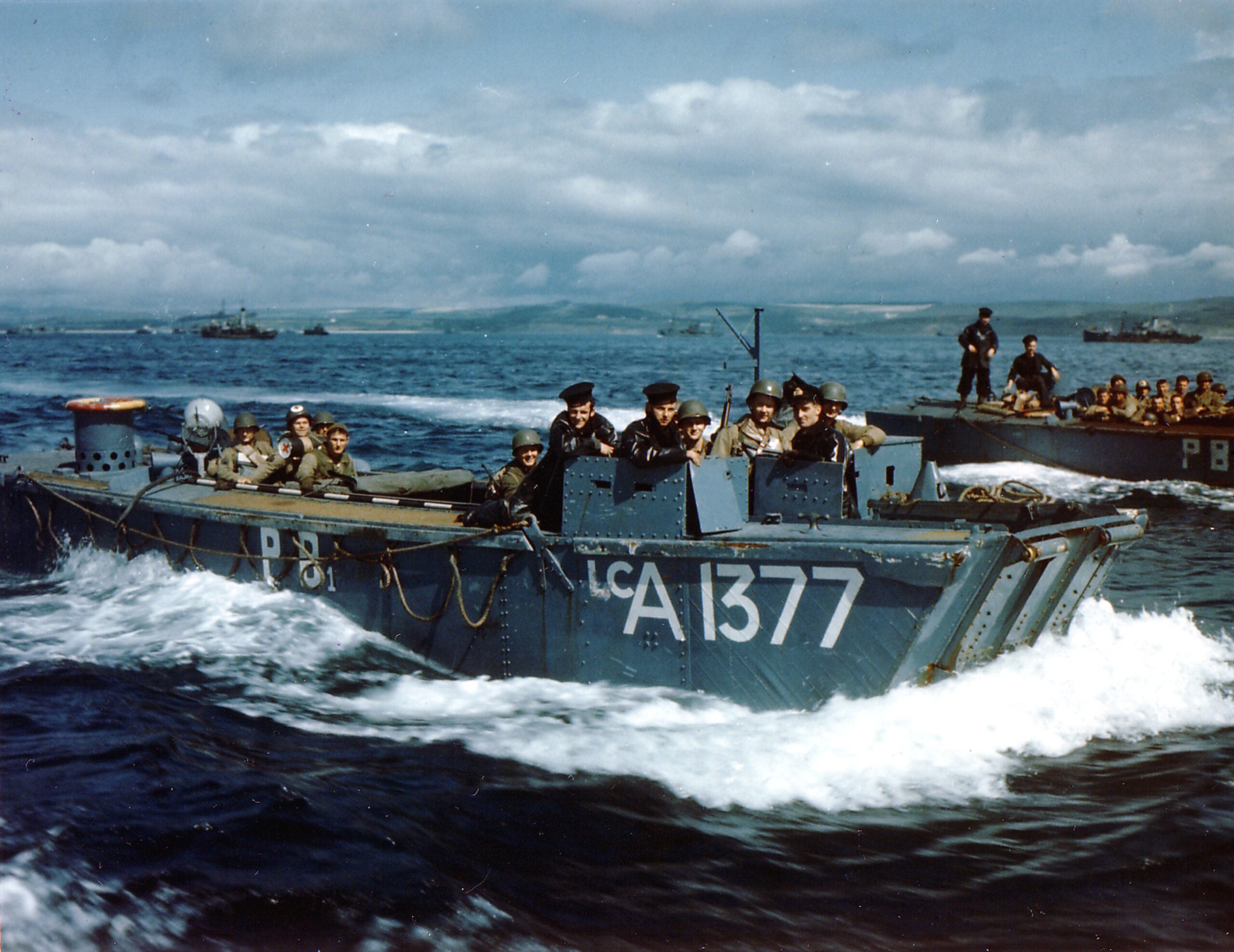
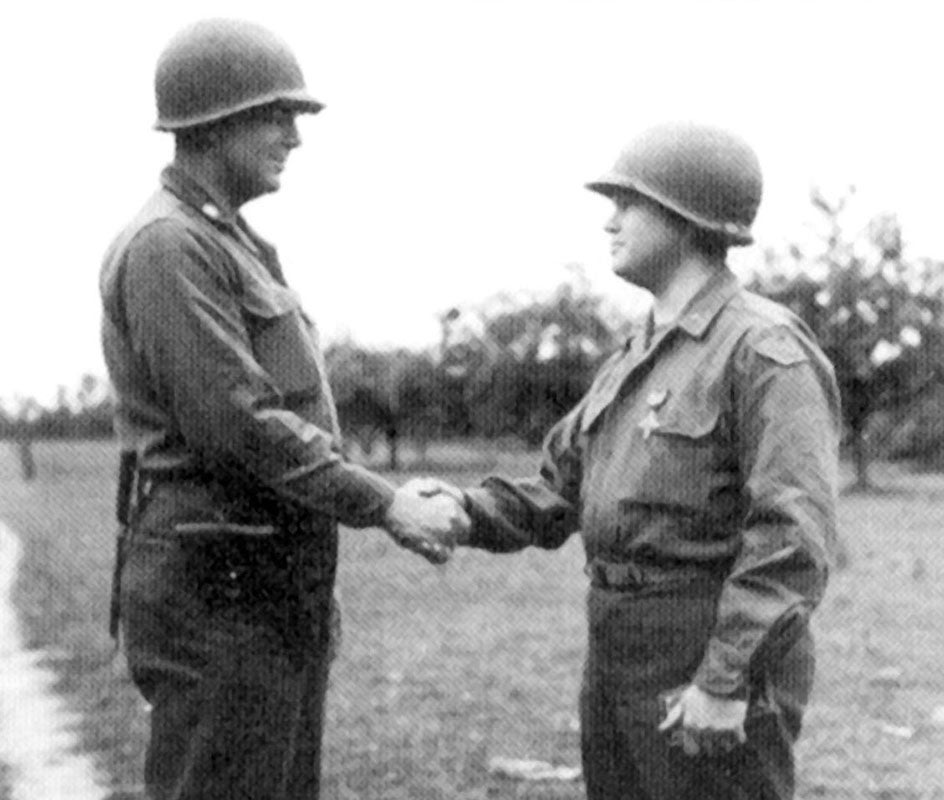
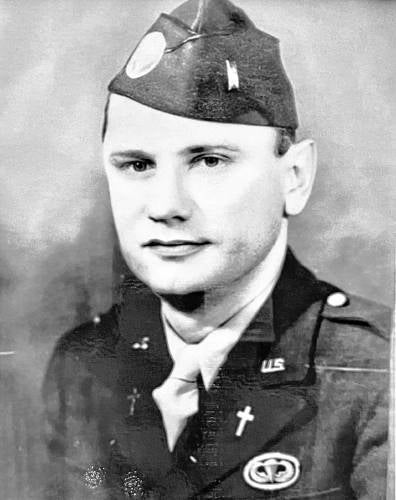
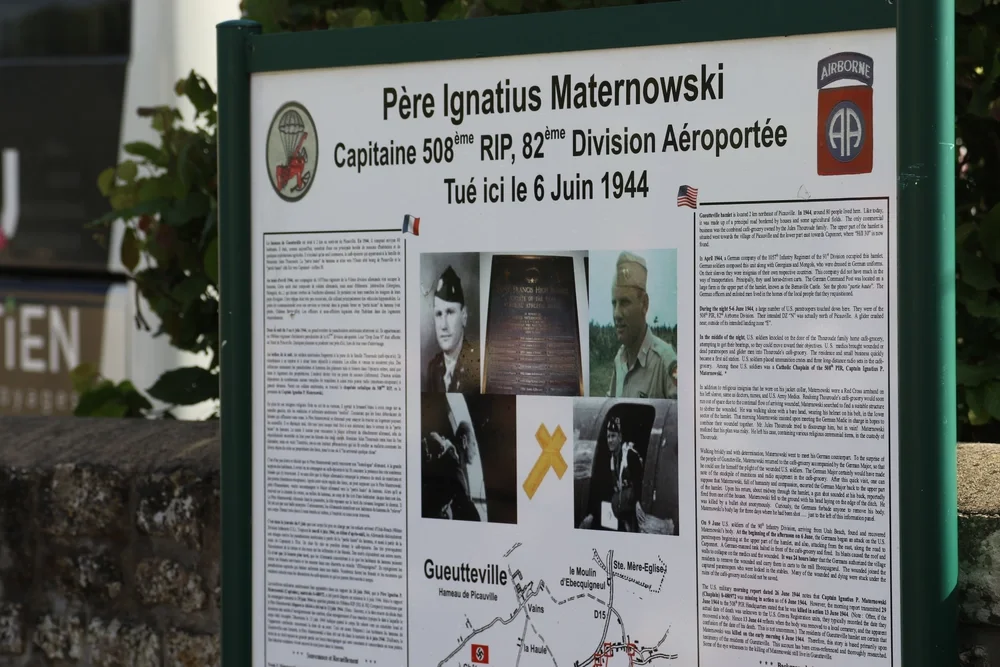
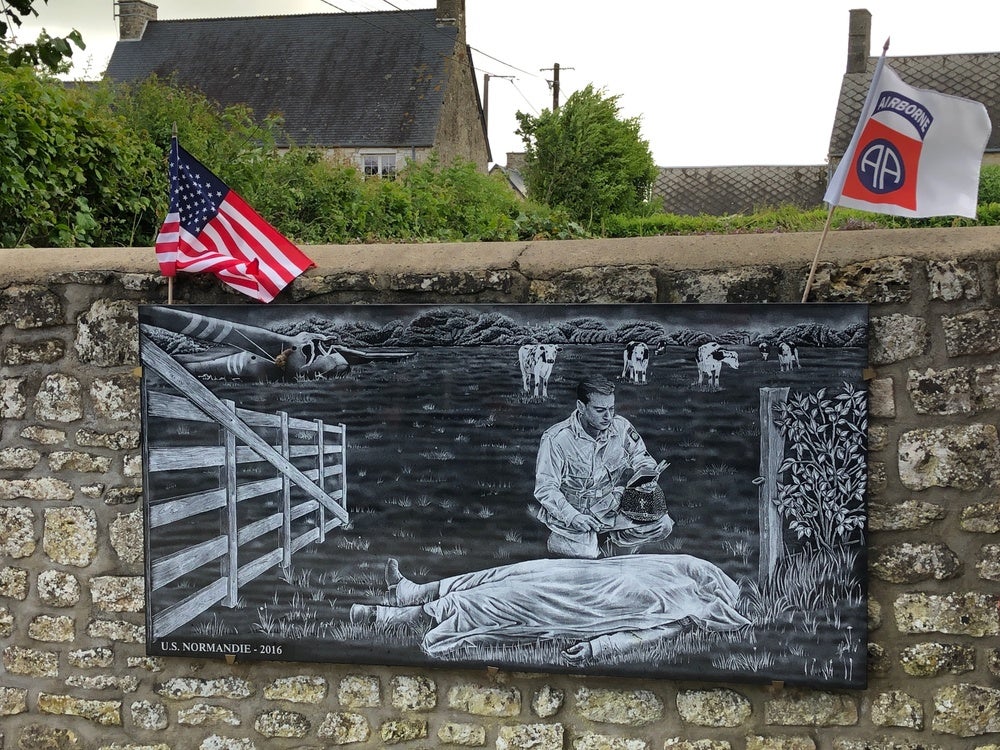
Joseph Lacy: Father Ranger
Father Joseph Lacy joined the U.S. Army in July 1943 and volunteered for service with the 5th Ranger Battalion only a week prior to D-Day.
At first, many in the unit thought he was unfit to keep up with the Rangers. But they’d soon learn that Lacy was every inch a warrior and a hero.
Lacy was aboard the first ship to cross the English Channel that landed at Normandy. On the voyage to the frontlines, he told his battalion, “When you land on the beach and you get in there, I don’t want to see anybody kneeling down and praying. If I do, I’m gonna come up and boot you in the tail. You leave the praying to me, and you do the fighting.”
Lacy landed with the Rangers on Omaha Beach, Dog Green Sector, the first craft to land on that section of the warfront. Lacy was the last man out just before an artillery shell hit the fantail.
The Rangers sustained heavy casualties that day—half of their men were killed. Amidst the chaos and enemy fire, Lacy selflessly aided wounded soldiers and administered last rites for those beyond human assistance. For these heroic actions, he was awarded the Army’s Distinguished Service Cross, the second highest decoration for valor after the Medal of Honor.
The citation reads:
“In the invasion of France, Chaplain Lacy landed on the beach with one of the leading assault units. Numerous casualties had been inflicted by the heavy rifle, mortar, artillery and rocket fire of the enemy. With complete disregard for his own safety, he moved about the beach, continually exposed to enemy fire, and assisted wounded men from the water’s edge to the comparative safety of a nearby sea wall, and at the same time inspired the men to similar disregard for the enemy fire. Chaplain Lacy’s heroic and dauntless actions exemplify the highest traditions of the military forces of the United States and reflect great credit upon himself and the United States Army.”
Lacy also received the Bronze Star for service with the 5th and 2nd Battalions. After his military service, he continued to serve within the Catholic church. For 10 years he served as Chancellor of the Hartford Connecticut Diocese. He was then appointed Chancellor of St. Luke’s Parish in Hartford, which he called home.
Father Maternowski: No Greater Love
Father Ignatius Maternowski is believed to be the only U.S. military chaplain killed in battle on D-Day. He was a U.S. Army captain and paratrooper with the 82nd Airborne’s 508th Parachute Infantry Regiment. In the early hours of June 6, the 32-year-old chaplain parachuted with the unit.
The regiment landed behind German lines near the small village of Gueutteville. They quickly turned the only two buildings into first aid stations for the wounded and dying. These quickly became overcrowded, and more space was desperately needed. Given he was in enemy territory, Maternowski had no choice but to plead with German officers to possibly let him establish a common medical station to aid both sides. He hoped to convince them by citing Geneva Convention noncombatant rules.
Maternowski made a difficult decision to walk alone and unarmed to speak with the German chief medic about combining efforts. He safely returned with the German medic to show him their conditions.
However, after escorting the German back, Maternowski was shot in the back by an enemy sniper. His body was left unrecovered for three days. His remains were eventually recovered.
In 1948 Maternowski’s remains were returned to the United States and buried in the Franciscan Friars’ cemetery section in South Hadley, Massachusetts.
His gravestone reads “No Greater Love,” a clear reference to John 15:13: “Greater love has no one than this: to lay down one’s life for one’s friends.”
In Gueutteville, you’ll find a memorial erected in honor of Maternowski’s courageous deeds. In 2021, an 800-year-old church in France installed a stained-glass window dedicated to the chaplain. The church is just a mile from where Maternowski took his last breath on this earth.
Heroes on the Spiritual Battlefront
Whether on the frontlines of the D-Day invasion, or on battlefields around the globe, military chaplains served gallantly alongside those fighting in the air, land and sea, giving them comfort, strength and at times making the ultimate sacrifice in service to their fellow brothers.
These stories are powerful reminders of why we must protect religious liberty in our country, and why this First Freedom is vital to America’s armed forces.
Without the devotion of chaplains, our military service members would have to face the horrors of war without any hope, comfort or source of encouragement.
Chaplains serve a unique and essential purpose. They’ve been part of America’s military from the very beginning. During the War of Independence, George Washington established a chaplain corps to tend to the spiritual needs of our soldiers. Throughout our nation’s history, chaplains have served alongside our troops, providing spiritual support to our service members and veterans.
By protecting religious freedom in America’s military, we’re helping ensure that chaplains can support and provide service members with the spiritual fortitude—the full and complete armor—they need to fight for our freedoms.